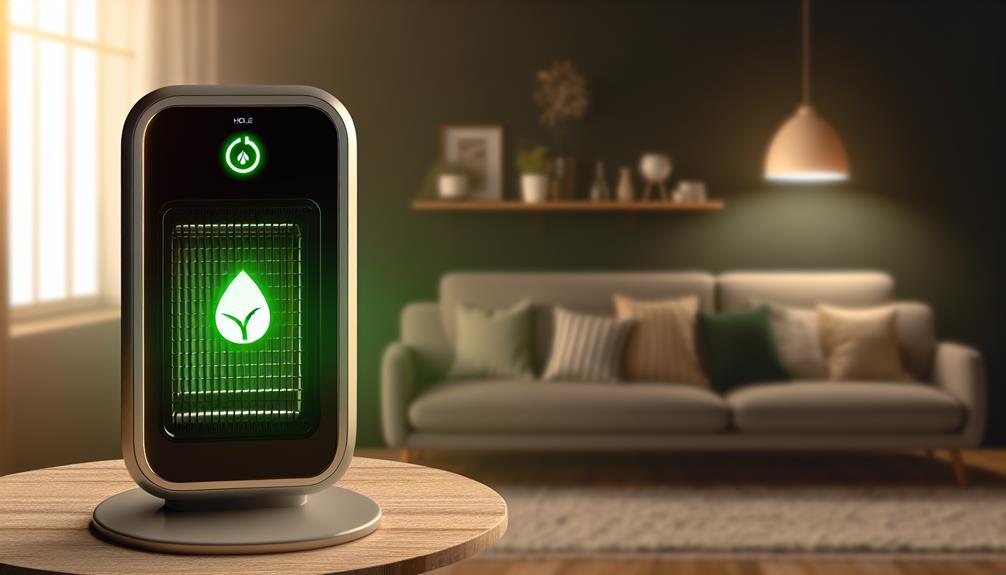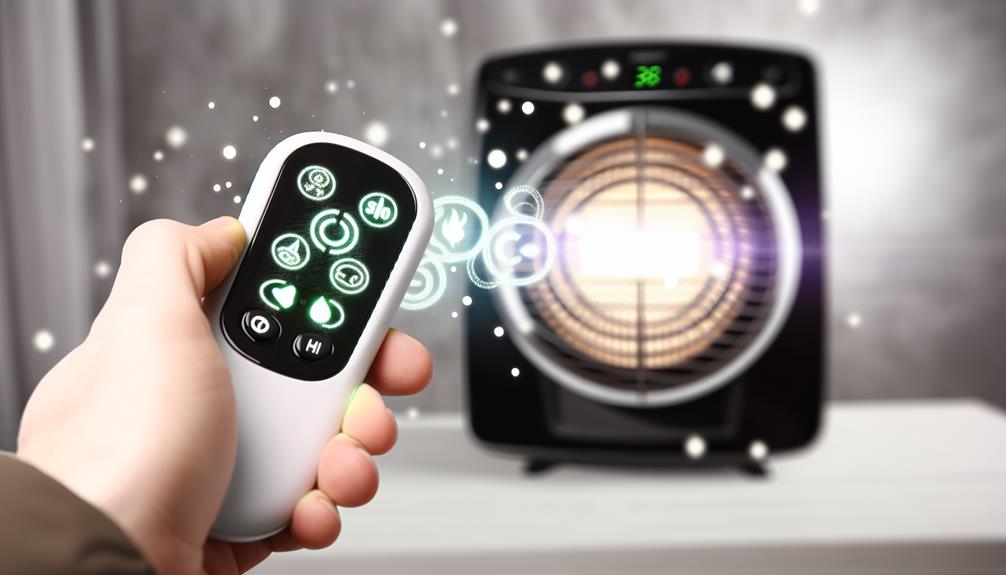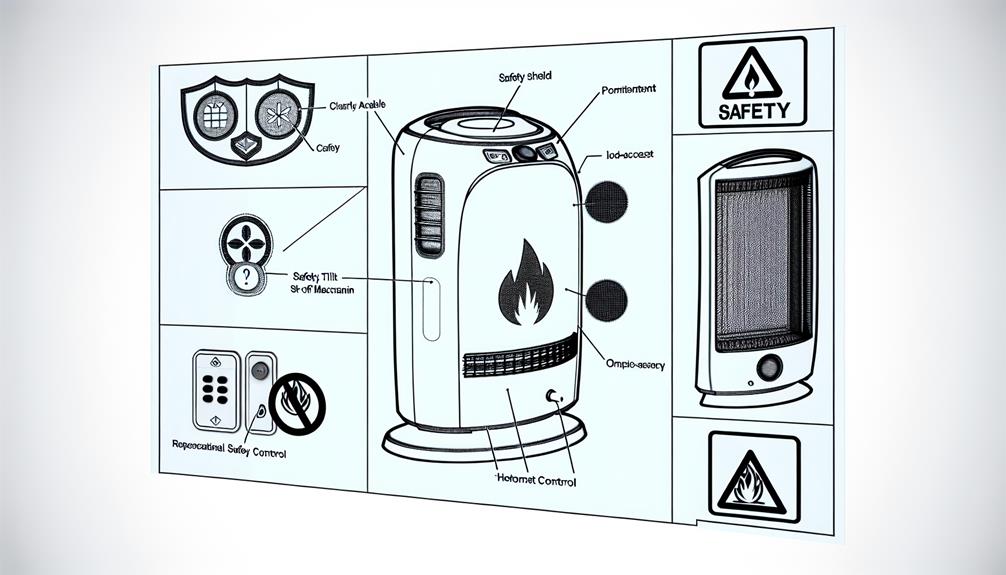As you approach the colder months, your portable heater becomes as crucial as a lighthouse guiding ships through foggy nights, ensuring your comfort and warmth at home. It's imperative you familiarize yourself with its myriad features to harness its full potential. From safety measures like tip-over switches to energy-saving functions that keep your bills in check, understanding these aspects can make all the difference in your daily use. You've likely skimmed over the user manual, but have you truly grasped the capabilities of that thermostat function or the significance of the heater's oscillation feature? Let's unpack the nuances of your portable heater's functions, so you can not only enhance its performance but also extend its lifespan. Just imagine the satisfaction of mastering these features to create a cozy and safe haven as the chill sets in.
Key Takeaways
- Electric heaters are often the safest portable heaters.
- Programmable thermostats can be scheduled to align with your daily routine.
- Oscillation feature spreads warmth broadly for even heat distribution.
- Remote control operations enhance user experience, comfort, and safety.
Identifying Heater Types
To accurately select a space heater that fits your needs, it's essential to understand the distinctions between the various types available, such as electric, radiant, convection, and fan-forced heaters, each with its own unique heating method and suitability for different environments.
Radiant space heaters work by directly warming objects and people in their path through infrared radiation. These heaters emit heat almost immediately and are ideal for spot heating in a specific area rather than whole-room heating. In contrast, convection heaters are designed to heat the air in a room, creating a consistent and even temperature throughout. They're typically slower to warm up but are better for maintaining heat over a longer period.
Electric heaters are often the safest portable heaters, especially in comparison to unvented combustion heaters, which can pose serious risks such as carbon monoxide poisoning. When considering the heater's capacity, check the wattage rating to ensure it's appropriate for the size of your space.
Fan-forced heaters use a fan to blow air over a heating element, speeding up the warming process and are effective for whole-room heating. Remember, vented combustion heaters need to be placed near an outside wall for safety and proper ventilation. Your choice should align with both your heating requirements and safety considerations.
Thermostat Functionality
You'll find that setting the right temperature on your portable heater is crucial for both comfort and energy savings. Understanding the different types of thermostats available can guide you in choosing a heater that best fits your requirements. By optimizing thermostat functionality, you can maximize energy efficiency, ensuring your space remains consistently warm without wasting electricity.
Setting the Right Temperature
Setting your portable heater's thermostat to a comfortable level not only ensures efficient heating but also helps maintain a consistent room temperature. Adjustable thermostats allow you to fine-tune the amount of heated air released, tailoring it to the amount of space you need to warm. This is crucial for energy saving, as you avoid overheating and wasting energy.
| Feature | Benefit |
|---|---|
| Adjustable Thermostat | Tailors heating to your comfort level. |
| Programmable Settings | Maintains consistent temperature automatically. |
| Energy Saving Mode | Reduces power consumption when optimal temperature is reached. |
| Overheat Protection | Prevents excessive heating, enhancing safety. |
Thermostat Types Explained
Understanding the different types of thermostats will further enhance your ability to manage your portable heater's energy efficiency and comfort levels. Here's a concise overview of thermostat types explained for practical use:
- Mechanical Thermostats: Ideal for basic heating systems, these utilize a bimetallic strip, offering reliable functionality without the need for power sources. However, they lack the precision of more modern thermostats.
- Digital Thermostats: These are perfect for precise temperature regulation and can be programmed to suit your schedule, making them suitable for systems like heat pumps or radiant heating. They're also safe with cool-to-the-touch surfaces.
- Smart Thermostats: For the ultimate control, smart thermostats learn your habits, allow remote adjustments, and provide energy usage data, making them a smart choice for any modern heating system.
Maximizing Energy Efficiency
Harnessing the full potential of your thermostat's functionality can significantly enhance energy efficiency in your heating practices. By adjusting the thermostat to a lower setting when the room isn't in use or during sleeping hours, you'll save energy. Determine the optimal level for your comfort, considering the room's insulation, which is critical to power usage efficiency. With a programmable thermostat, you can schedule heating to align with your daily routine, avoiding wasted energy and contributing to savings on your per kilowatt-hour costs. Don't overlook the timer function—it's a practical tool to automatically shut off your heater after a set period, ensuring you're not overusing energy for heating and cooling when it's not necessary.
Oscillation and Direction Control
When you're seeking even heat distribution in a room, the oscillation feature on your portable heater is critical; it rotates to spread warmth broadly. You can also adjust the heater's direction, focusing the heat exactly where you need it most for personalized comfort. Utilizing both oscillation and direction control in tandem ensures efficient heating coverage, enhancing your space's coziness.
Benefits of Oscillation
Equipped with oscillation, your portable heater ensures that heat is distributed evenly throughout your space, preventing the discomfort of uneven temperatures and persistent cold spots. This feature is particularly useful for heating larger rooms or areas with multiple seating arrangements. Here's how oscillation enhances your heater's performance:
- Improved Air Circulation: The oscillation function helps in reaching a more consistent temperature by moving warm air throughout the room, ensuring no corner stays chilly.
- Personalized Comfort: You can adjust the heater's direction, targeting the heat flow where it's needed most for your individual comfort.
- Safety Enhancement: Many heaters with oscillation also include safety features that automatically shut the unit off if it tips over, reducing the risk of accidents.
Adjusting Heat Direction
Building on the benefits of oscillation, you can further tailor your heating experience by adjusting the direction of the heat flow to suit the specific needs of your room and personal comfort. Your space heater's ability to control heat direction ensures that warmth is not just evenly distributed but also focused where it's most required. Place the heater on a level surface and experiment with the settings. You might direct the heat towards a frequently used seating area or away from sensitive objects and people. By fine-tuning the oscillation and direction control, you'll prevent overheating and achieve consistent comfort. Remember, the right adjustment of heat direction can make a significant difference in how effectively your space heater warms the environment.
Energy Efficiency Modes

To maximize your heater's efficiency while keeping energy costs down, seek out models featuring Energy Efficiency Modes that automatically regulate heat output. These modes are specifically designed to provide supplemental heat where and when you need it without wasting energy. By understanding and utilizing these settings, you'll optimize your space heater's performance and potentially see a reduction in your utility bills.
Consider these key features when using Energy Efficiency Modes:
- Automatic Temperature Regulation: Heaters are designed with built-in thermostats that detect room temperature. Energy efficiency modes leverage this feature to adjust the heat output, maintaining a consistent comfort level without overworking the unit.
- Variable Power Settings: Many space heaters allow you to select different power levels. Utilizing lower power settings in conjunction with energy efficiency modes can further reduce electricity usage, particularly during milder conditions or in smaller rooms.
- Timers and Programmable Controls: Set your space heater to operate only when needed. Timers and programmable settings work alongside energy efficiency modes to ensure that your heater runs during designated times, adhering to safety guidelines while minimizing energy consumption.
Timer and Scheduling Usage
Harnessing your space heater's timer and scheduling functions can significantly enhance energy efficiency and provide tailored comfort by initiating heating cycles that align with your daily routine. By using the timer, you can set your heater to turn off after a predetermined period, which is not only convenient but also a critical aspect of heater safety.
Adjust the timer to have your space heater turn on before you wake up, ensuring a warm environment right from the start of your day. Similarly, scheduling usage allows the heater to power down when you're typically away, avoiding unnecessary energy consumption.
To maintain a comfortable and consistent temperature, set up a recurring schedule. This strategic use of your space heater ensures it operates efficiently, only when needed, and enhances safety by reducing the risk of overheating or potential fire hazards.
Here's a quick reference for optimal timer and scheduling usage:
| Function | Benefit |
|---|---|
| Timer Setting | Automatically turns off to ensure safety |
| Morning Start | Warms room before you wake up |
| Evening Shut-off | Cools down space before bedtime or absence |
Remote Control Operations

While the timer and scheduling functions provide convenience and safety, the remote control operations offer the added comfort of adjusting your portable heater's settings without having to leave your cozy spot. Manufacturers equip most modern space heaters with remote controls to enhance user experience and promote safety. Knowing how to deftly handle the remote ensures you maintain a comfortable indoor air quality effortlessly.
To optimize your use of remote control operations, consider the following:
- Familiarize Yourself with Remote Functions: Learn the layout of the remote control. Each button corresponds to functions like temperature adjustment, fan speed, and oscillation. A quick glance at the manual can save you time and confusion later.
- Maintain Effective Operation: Always aim the remote directly at the heater from within the recommended range. This ensures your commands are received without interference. Regularly check the batteries to avoid a sudden loss of control, which could impact both your comfort and safety.
- Store Responsibly: When not in use, place the remote in a designated spot. This prevents misplacement and keeps it accessible for when you need to make swift adjustments to your space heater's settings.
Maintenance and Cleaning
Regular maintenance, including a thorough cleaning of your portable heater's exterior and grille, ensures optimal performance and longevity. Dust and debris can accumulate over time, which can affect your space heater's efficiency. Carefully remove any buildup from these areas, paying special attention to the air intake and exhaust vents. Blocked vents not only hinder performance but also pose a safety risk by potentially increasing levels of carbon monoxide.
You'll also want to check the power cord and plug for signs of damage. Frayed wires or a worn plug can be a fire hazard, so replace them immediately if you spot any issues. For internal components like the heating element, adhere strictly to the manufacturer's instructions. This often involves using specific tools or techniques to avoid damage.
Furthermore, manufacturers equip space heaters with guidelines for a maintenance schedule. This schedule may include routine checks and, occasionally, professional servicing. Adhering to these recommendations not only enhances safety, as emphasized by the Consumer Product Safety Commission, but also preserves the life of your heater. By integrating these maintenance and cleaning practices, you'll ensure your space heater operates at its best while minimizing safety risks.
Safety Features Explained

To ensure your safety and peace of mind, select a portable heater equipped with modern safety features like tip-over switches and overheating sensors. These crucial components act as your first line of defense against common hazards associated with space heaters. When diving into the world of space heaters, it's essential to prioritize models that come with the following safety elements:
- Tip-Over Switch: This feature automatically shuts off your heater if it's knocked over, significantly reducing the risk of fire.
- Overheating Sensors: These sensors trigger an automatic shutdown if the internal components reach unsafe temperatures, preventing potential overheating.
- GFCI Plug: A Ground-Fault Circuit Interrupter plug cuts off power if it detects an imbalance in electrical flow, offering extra protection against electric shock.
Always check for a safety certification label from an independent testing organization, confirming that the heater meets established safety standards. Additionally, ensure the heater's cord is robust and not excessively long, as using an extension cord with heaters is not recommended due to increased fire risk. Finally, review the fire safety score and hot-surface score—higher scores indicate that the heater is recommended for use with a lower likelihood of causing burns or starting a fire. Safety features explained in these terms help you make an informed choice for a secure and warm environment.
Frequently Asked Questions
How Do You Use a Space Heater Efficiently?
To use a space heater efficiently, check room insulation to retain heat. Set the thermostat to a comfortable level, and position the heater away from flammable materials. Regular maintenance checks ensure it's running properly. Timing your usage, like turning it off when not needed, saves energy. By managing heater placement and thermostat setting, you'll maximize warmth and minimize costs, making your space heater an effective tool in your energy-saving arsenal.
What Is the Most Efficient Form of Portable Heating?
You're seeking the most efficient portable heating, and it's no coincidence that infrared heaters top the list. They offer direct warmth, with advantages like energy savings by heating you and not the entire room. Ceramic heaters are beneficial for quick heating, while oil-filled units are praised for safety and even heat distribution. When considering electric heater types, opt for convection models to efficiently spread warmth throughout your space.
What Should I Look for in an Energy Efficient Heater?
When hunting for an energy-efficient heater, prioritize models with an Energy Star rating, as they're more economical. Look for thermostat control to maintain steady temperatures. Opt for ceramic elements or infrared technology, which provide efficient warmth. Additionally, choose a heater with an eco mode to save energy during operation. These features not only optimize energy use but also contribute to lower utility bills and a reduced environmental impact.
How Do I Maximize My Space Heater?
To maximize your space heater, strategically place it away from foot traffic but near the room's center. Adhere to safety tips like keeping flammable materials at a distance. Fine-tune the thermostat settings for a balance between comfort and efficiency. Establish a maintenance routine to ensure it's running smoothly and check room insulation to prevent heat loss. Proper use not only saves energy but also extends the heater's life.
